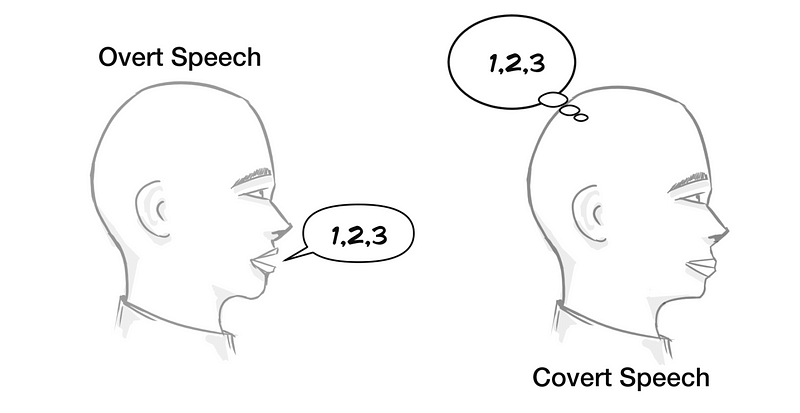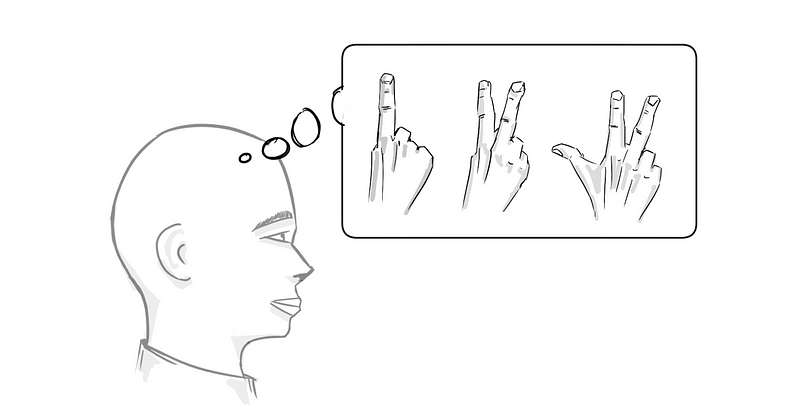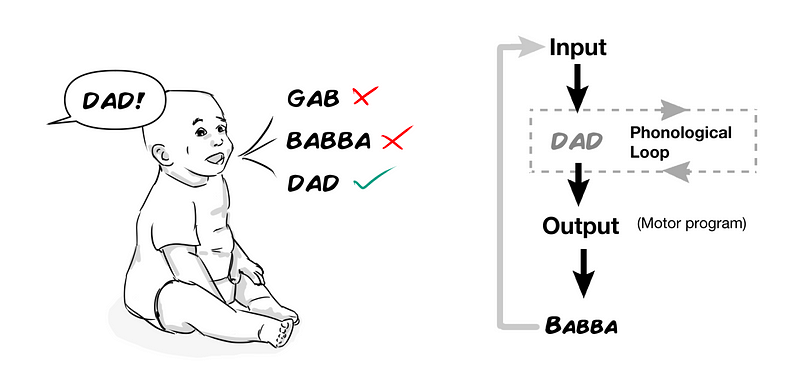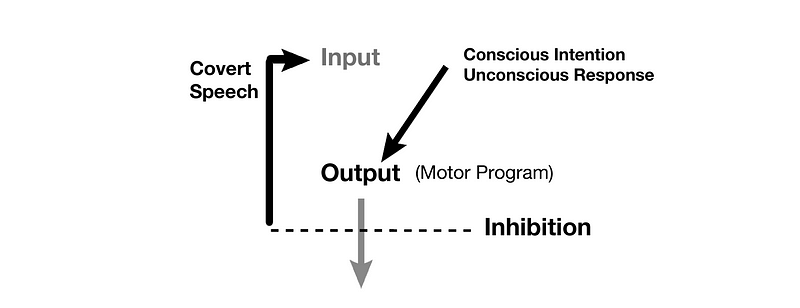# Understanding Covert Speech: The Inner Voice of Consciousness
Written on
Chapter 1: The Fascinating Concept of Covert Speech
Covert speech, the internal dialogue we experience, is a captivating aspect of brain function. This inner voice, which often accompanies us as we read, is a uniquely private phenomenon. Despite its commonality, there remains a lack of consensus regarding its universal presence. From a neuroscience perspective, understanding this process is not only theoretically feasible, but it could also pave the way for advancements in artificial intelligence systems, potentially leading to the next generation of AIs.

Covert speech is the silent reproduction of words, sounds, or language. It can occur voluntarily, such as when we consciously repeat a phrase in our minds, or involuntarily, like when a catchy tune plays in our heads. Each individual’s mental processes are subjective; two people may not think about the same topic in identical ways. However, there are common threads, as some individuals think in words, others in images, and some in a blend of both, or even neither.
Interestingly, individuals who are deaf may not lack inner speech; instead, they might experience it as sign language, highlighting the brain’s adaptability in processing thoughts.
Section 1.1: Defining Covert Speech
Covert speech is also referred to by several other names, including imagined speech, internal monologue, inner voice, and endophasia. Speculation exists around historical interpretations of divine voices as forms of imagined speech, suggesting a long-standing intrigue with this cognitive phenomenon.

One fascinating aspect is that some deaf individuals visualize sign language rather than hearing sounds, occasionally enriching their thoughts with animated gestures to express emotions.
Section 1.2: The Neuroscience Behind Covert Speech
Research in speech and language has provided insights into the mechanisms of covert speech. The brain's phonological loop serves as a temporary sound buffer that can replay auditory information, such as when a song lingers in your mind. However, this alone does not account for the self-talk aspect of our internal dialogue.
An intriguing fact is that while spoken language has a specific rhythm and tone, inner speech can vary greatly since it isn’t restricted by physical limitations like breathing. This can lead to discrepancies between how we perceive our voices when recorded versus how we think we sound.
Chapter 2: The Development of Inner Speech
The process of developing inner speech typically begins in early childhood, around ages 4 to 5. Children learn to imitate their caregivers, gradually refining their ability to express thoughts internally. This initial learning often happens unconsciously and forms the basis of the phonological loop's articulatory function.

As children grow, they develop self-control mechanisms that allow them to inhibit motor responses before actual speech occurs. This inhibition connects with the auditory cortex, creating an experience that feels like both speaking and listening.

The growth of cognitive abilities, such as the theory of mind, enables individuals to think about themselves and others from an external viewpoint, enriching their inner dialogue.

Section 2.1: The Challenges of Inner Speech
Sometimes, our inner dialogue can turn disruptive, leading to unwanted thoughts or critical voices. This can escalate to persistent chatter that distracts from tasks, and in severe cases, it may manifest as auditory hallucinations in psychotic disorders.
The first video, "AI Consciousness? Exploring the Possibility with Prof. Eric Schwitzgebel," delves into the intersection of AI and consciousness, raising questions about the nature of inner speech in artificial systems.
Section 2.2: Inner Speech and Consciousness
A compelling question arises regarding consciousness: how can one be aware of oneself while also being oneself? This riddle can be addressed by recognizing that the system responsible for our inner monologue can process inputs while producing new ones, creating an illusion of duality.

The phonological loop not only supports the replay of internal dialogues but also facilitates conversations with oneself, reinforcing the role of inner speech in everyday consciousness.
The second video, "A Test for AI Consciousness," explores methodologies for determining consciousness in AI systems, drawing parallels to human cognitive processes.
Conclusions
Covert speech, or imagined audio, is a complex and intriguing process experienced differently by each individual. It involves a replay of motor commands that influence auditory processing areas in the brain. The phonological loop plays a crucial role in this experience, which is often perceived as the voice of consciousness.
While technology has yet to fully capture the essence of imagined speech, the mechanics of reproducing covert speech in AI seem achievable. However, this is just one aspect of a broader system required for developing advanced artificial general intelligence.
I hope this overview offers a clearer understanding of covert speech and its significance in cognitive science. Thank you for reading!
Sources / Bibliography
For additional insights, refer to the following resources:
- Imagined Speech - Wikipedia: A comprehensive overview of the concept and related studies.
- Neuroscience Bibliography: Introductory texts on Neuroscience and AI.